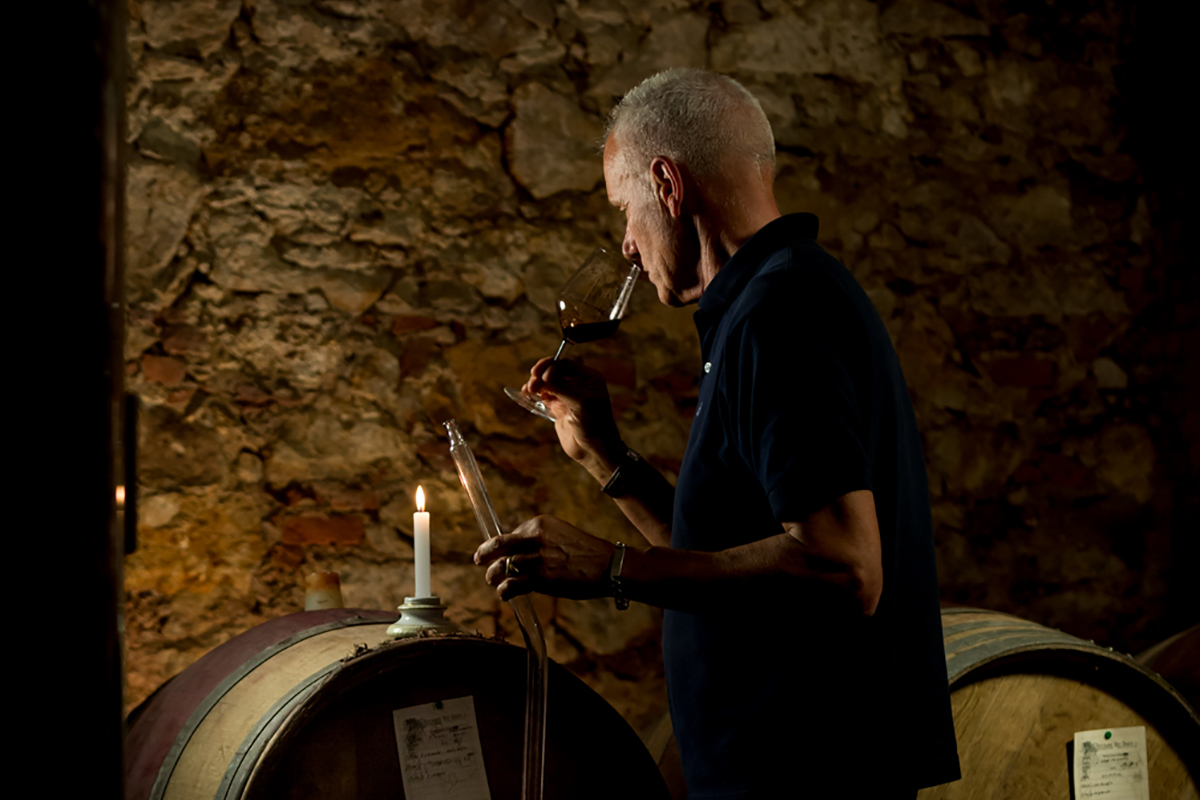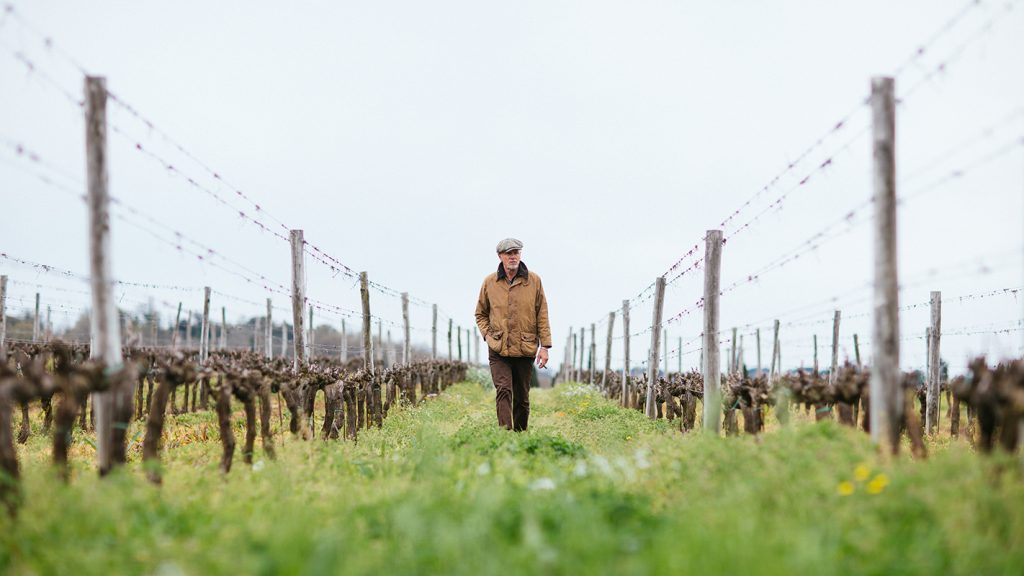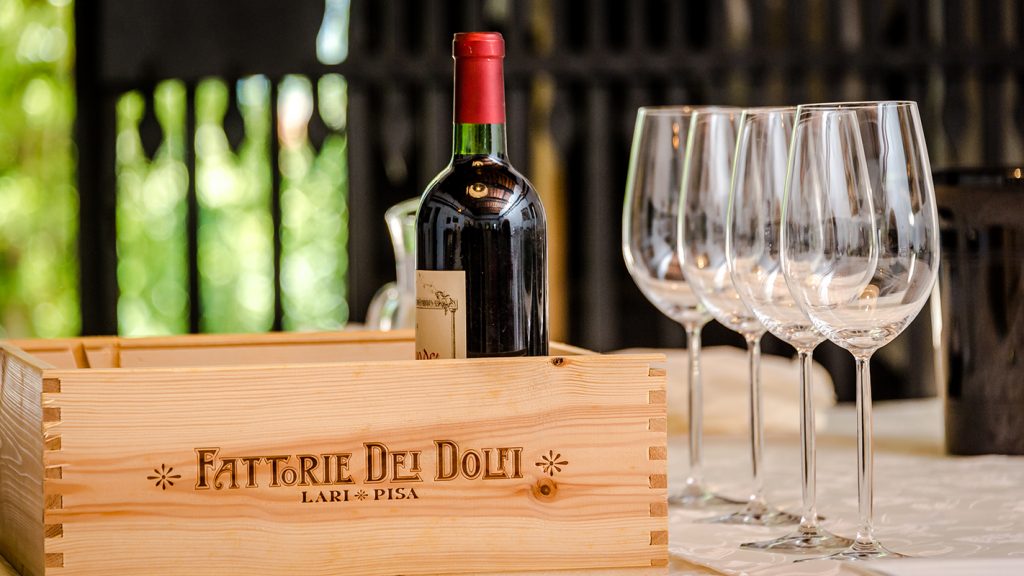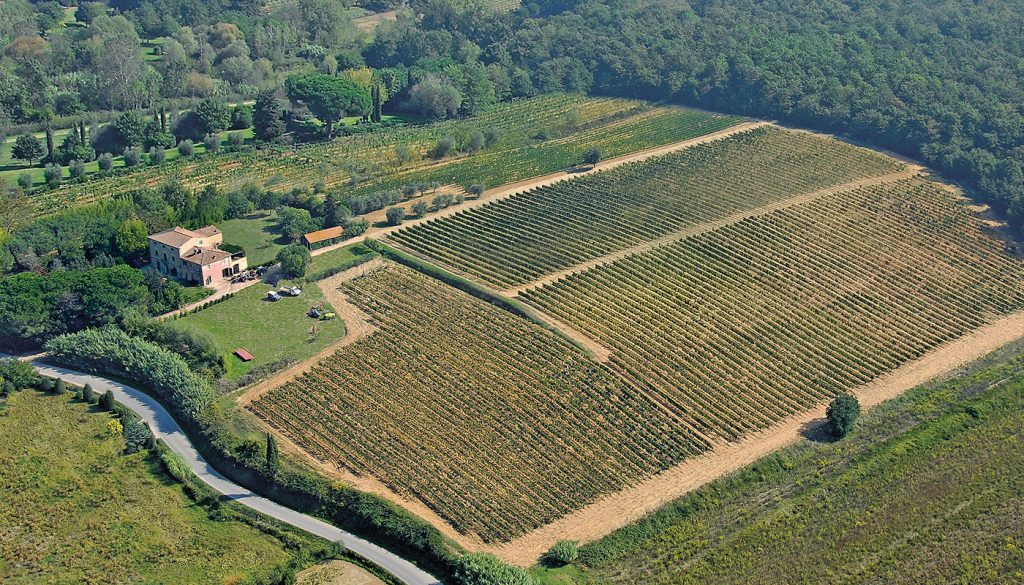
For more than one hundred years, Fattorie dei Dolfi has cultivated extraordinary wines. Located in the Tuscan hills of Perignano, dei Dolfi’s vines have benefited from a maritime climate, long hours of sunshine and cool sea breezes. Words by Catherine McMaster.
There is nothing more evocative or sensory then taking a sip of bold and flavoursome wine. A sip can recall a memory long forgotten, catalogued in our past and gathering dust. It was Ernest Hemingway who wrote it best: ‘Wine is one of the most civilized things in the world and one of the most natural things of the world that has been brought to the greatest perfection, and it offers a greater range for enjoyment and appreciation than, possibly, any other purely sensory thing’.
Wine, even more than food, conjures up memories and brings people together. Shared experiences, lost loves, renewed acquaintances, boisterous family gatherings … often the backdrop to all of these occasions is wine. Consider the glass of chilled, ice-cut rosé you drank in the twilight hours of mid-summer. Or the warming and cinnamon-infused mulled wine you enjoyed on Christmas Day.

It’s almost unfathomable in western Europe to consume an epicurean meal, to understand its subtlety and distinction of flavour without also pairing it with a drop of the local vino. However, there are some wines which are so bold and nonconformist that to pair them with anything other than an antipasta would seem incongruous.
Cue, Fattorie dei Dolfi, a small boutique winery located in the rolling and burnt Tuscan hills of Perignano. Fattorie dei Dolfi is truly boutique, producing two bottled variations from its grapes: Imeneus (a red) and Bianco per Amore (white).
This exclusivity of taste and flavour is the brainchild of Giovanni Dolfi, who inherited the vineyard from his parents. ‘The vineyard has been in my family for a century’, he explains. Yet Dolfi decided to modernise the ageing grapes and dry, inhospitable and long-forgotten soil in a project he called ‘upgrading’.
‘Although I called it upgrading, it was practically starting from the beginning,’ he tells me. ‘We worked the soil, planted certain type of grass to restore the soil and re-planted the vines in a completely new direction. From there, we started to grow the grapes, experiment on wine-making and continue to optimise the skills to improve the quality.’
It wasn’t until 2008 that Fattorie dei Dolfi decided to make its first vintage and, even then, it wasn’t bottled until 2011, to give it enough time to age. Finding an exceptional bottle of wine; a drop which tantalises the taste buds, invites a sensory experience, and doesn’t leave too much of an aftertaste, is no easy feat. The wine market is saturated, far more so than it was in the ‘70s and ‘80s and finding a delectable drop is tricky. This saturation is also challenging for the winemakers – how do they differentiate their vines in an industry which is flooded with near-identical grapes?
‘When I started the upgrading project this world was full of wines,’ Giovanni explains. ‘It wasn’t like in the 1960s or 1970s when there was much less competition. As a late-comer, without the support of a major branding effort, I have to had to work in a much smarter way.’
For Giovanni, this means producing less but ensuring the quality, uniqueness and originality is unparalleled. Fattorie dei Dolfi does not do shortcuts; the fact that it took four years to even materialise a wine from Giovanni’s new venture (even though the vineyard was a century old) is a testament. Fattorie dei Dolfi is not a commercial enterprise, producing two varieties of high-quality wine which blend different grapes, soils and flavours.
Giovanni’s property is in the ideal location for the production of various blends. The estate is at the north border of Maremma, which is famous for making wines with international grapes. The estate is also at the west border of Chianti, renowned for producing wines using primarily Sangiovese, the most famous Tuscan grape variety. ‘From my old vineyards before the upgrading, we found some very old grape varieties, such as the old clone of Sangiovese— Prugnolo Gentile; and an old clone of Chardonnay. From there were born my top flagship wines: Imeneus and Bianco per Amore,’ Giovanni explains.
It is not an understatement to suggest that these two pinnacle wines of Fattoie dei Dolfi are, in a word, remarkable. The infusion of conflicting flavours combined with grapes from a different era has created a blend which is arresting and matchless.
Fattorie dei Delfi’s Bianco per Amore is an assortment of Pinot and Chardonnay grapes. The saline aroma of the Pinot and the woody taste of the Chardonnay are completely harmonious and work well together. Surprisingly, for a white, it has a velvety consistency and rolls effortlessly off the tongue. It’s a playful and jovial drink and could be well-matched with shellfish or haute cuisine seafood dishes. As Giovanni tell me: ‘The Bianco per Amore is a very unique white wine that, I am almost certain, you won’t find elsewhere on the market. It’s very fine, delicate, but full of flavour and aroma. Since our vineyards are close to the sea, a plate of fresh oysters with chilled Bianco per Amore could be your treat during your beach holidays.’
In contrast, the Imeneus is a far more solitary and independent drink. Giovanni doesn’t recommend matching it with food, ‘the wine is extremely delicate and silky, only when you have a clean palette could you appreciate all the unique qualities of this wine’. Imeneus is 100 per cent Prugnolo Gentile (Sangiovese Grosso) grape variety, one which was used to produce Brunello di Montalcino (one of Italy’s best-known and most expensive wines).
Everything about the Imeneus is pedigree; it matures for 24-36 months in carefully selected barriques and the result is a joyous, ruby red-hued and velvety wine which is rich, full and completely persistent on the taste buds. It is an elegant drop which seems to be the soul and backbone of Fattorie dei Dolfi. In fact, it almost seems unforgivable to not enjoy this exceptional wine under the fading, romantic Tuscan light, such is the wine’s poignant Italian spirit.
Yet what you can really taste in the wine is the love, care and attention paid to each bottle. It seems clichéd, but there is an undeniable purity to Giovanni’s wines which is difficult to find in a commercial market. As he highlights: ‘I am convinced that the drinkers of my wines will see the men who work behind them and all of the painstaking efforts we put in to create a perfect bottle.’
He continues: ‘I usually joke that people should not try to find too many things in the wines. A high-quality true wine offers timeless beauty and elegance, not the shining make-ups or bling-bling jewellery. What we offer in our wines is authenticity and respect for mother nature.’
It’s true, his two iterations offer the drinker far more than a pleasing drop. Rather, it’s a sensory experience; the wine itself is velvety and bold and the flavour so unique it’s almost convoluted, yet unexpectedly harmonious too. Never have I tasted such conflicting flavour and emotion in a mere glass of wine.
Giovanni explains it best: ‘I hope that my drinkers could imagine themselves standing on the hills of Poggio ai Venti with me, feeling the warmth of sunshine, the mild sea breeze on their faces, hear the chirping of the birds in the quiet woods around and see a grey hare rush through the vineyards. All these feelings of harmony and equilibrium are inside my wines.’
It’s the lyricism of the Italian language, lifestyle and environment that you can taste in Giovanni’s Bianco per Amore and Imeneus, and as you languidly sip one of them solo you can visually transport yourself to the Italian Tuscan countryside, and indeed – as Giovanni explained – feel the harmony and equilibrium of nature, soil and season in your veins.


